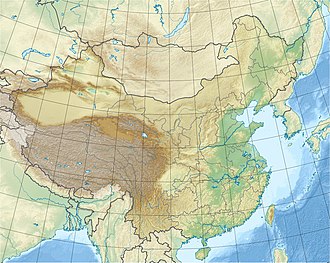| Kezhen Peak | |
|---|---|
| Karpogo Sar | |
Location in China | |
| Highest point | |
| Elevation | 7,038 m (23,091 ft) [1] |
| Prominence | 1,578 m (5,177 ft) [2] |
| Listing | Ultra |
| Coordinates | 35°55′30″N76°10′30″E / 35.92500°N 76.17500°E [2] |
| Geography | |
| Location | Xinjiang, China |
| Parent range | Karakoram |
Kezhen Peak, also known as Karpogo Sar, is a mountain in the Karakoram mountain range. It is located in the Xinjiang Autonomous Region of China.
Kezhen Peak has an elevation of 7,038 metres (23,091 ft) and a topographic prominence of 1,578 metres (5,177 ft), and is therefore an Ultra prominent peak.
